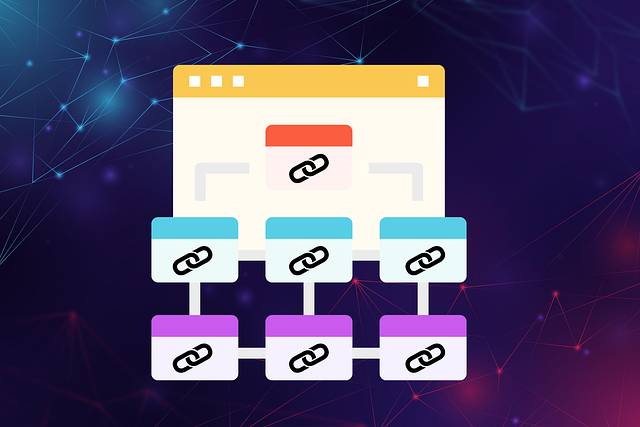SEO internal links are a powerful tool for WordPress users to enhance site performance. By strategically connecting relevant pages, these links guide users through valuable content and help search engines understand your site's hierarchy. Key strategies include creating contextually relevant links, optimizing anchor text with targeted keywords, and aligning the link strategy with site architecture and natural browsing patterns. Plugins like Yoast SEO simplify this process, allowing users to identify gaps, integrate keyword research, and create effective internal structures. Measuring user behavior through analytics tools helps optimize content and track the success of internal linking strategies, ensuring a balance between driving traffic and enhancing user experience.
Discover the power of SEO internal links for WordPress sites. This beginner’s guide breaks down essential concepts, strategies, and best practices for optimizing your site structure, creating engaging content that naturally links back to you, and leveraging powerful plugins. Learn why effective internal linking is crucial for boosting search rankings and driving more traffic to your WordPress website.
- Understanding SEO Internal Links: The Basics
- Why WordPress Users Need Internal Linking Strategies
- Optimizing Your Website Structure for Effective Linking
- Creating Engaging Content that Naturally Links Back to You
- Using WordPress Plugins for Seamless Internal Link Building
- Measuring and Analyzing the Impact of Your Internal Linking Efforts
Understanding SEO Internal Links: The Basics

Internal linking is a fundamental component of Search Engine Optimization (SEO) for WordPress sites. It involves creating strategic connections between pages within your website to enhance user experience and boost search engine rankings. By linking related content together, you establish a clear hierarchy and guide both users and search engines through your site’s valuable resources.
When implementing SEO internal links for WordPress, consider a few key tips and strategies. First, focus on creating relevant and contextually related links that provide additional value to readers. Second, optimize anchor text to include targeted keywords, making it easier for search algorithms to understand the link’s purpose. Lastly, develop a well-planned strategy that considers both the site’s architecture and the user’s natural browsing patterns. This ensures that internal links not only drive traffic but also foster a seamless navigation experience.
Why WordPress Users Need Internal Linking Strategies

For WordPress users, implementing effective SEO internal links is a game-changer when it comes to boosting their website’s online visibility and search engine rankings. In today’s digital era, where content is king, WordPress sites are often competing for attention with millions of others. To stand out from the crowd, users need to employ strategies that enhance their site’s structure and navigation—and this is where internal linking plays a pivotal role.
WordPress websites, with their dynamic nature and rich content, benefit immensely from strategic internal linking. It not only improves user experience by making sites more navigable but also reinforces search engine understanding of your content hierarchy. An SEO internal links tutorial can guide beginners on how to strategically place links within content to connect related pages. This approach allows search engines to crawl and index your site more efficiently, thereby improving your overall SEO efforts.
Optimizing Your Website Structure for Effective Linking

A well-structured website is the foundation for effective internal linking. When organizing your content, consider creating a hierarchical structure that makes it easy for users and search engines to navigate through your pages. This involves grouping similar topics together under relevant categories or using a logical site map that connects related articles. For instance, if you’re writing about WordPress SEO tips, ensure articles on keyword optimization, meta descriptions, and image SEO are all linked within the same section, making it seamless for readers to explore these topics further.
Optimizing your website structure involves strategic placement of internal links. These links should naturally flow between content pieces, providing valuable insights and directing users to relevant resources. For SEO in WordPress, focus on using anchor text that accurately represents the linked page’s content. Instead of generic “click here,” use phrases like “learn more about WordPress SEO optimization” or “read our ultimate guide to image optimization.” This not only enhances user experience but also signals search engines about the context and relevance of the linked pages.
Creating Engaging Content that Naturally Links Back to You

Creating engaging content is a powerful strategy to enhance your website’s SEO and user experience. When crafting blog posts, articles, or any form of content, aim to provide value, educate, or entertain your audience. Well-written, informative content naturally draws readers in, encouraging them to explore more of your site. For instance, if you’re discussing a specific WordPress plugin in a blog post, highlight its benefits and include a call-to-action suggesting related resources or further reading on your website. This not only keeps visitors engaged but also subtly guides them back to your site for more valuable content.
By integrating relevant keywords and topics seamlessly into your writing, you can create internal links that improve SEO. For WordPress users, this means optimizing content with a focus on internal linking strategies. A simple tutorial might include instructions on how to link to older, relevant posts within new content, or using anchor text effectively to create clickable links that direct readers back to key pages on your site. This organic linking not only improves navigation but also signals search engines about the relevance and authority of your website’s content.
Using WordPress Plugins for Seamless Internal Link Building

WordPress plugins offer a straightforward way for beginners to implement an effective SEO internal links strategy. These tools are designed to streamline the process of creating and managing internal links within your website, enhancing user experience and search engine optimisation (SEO). One popular plugin, Yoast SEO, provides an intuitive interface where you can easily identify content gaps and create relevant internal backlinks. By integrating keyword research with your content, this plugin ensures that your SEO internal links are strategic and contextually appropriate.
Additionally, plugins like Internal Linking help automate the linking process, especially when dealing with large websites. They offer features such as automatically generating links from anchor text, suggesting related posts for every page, and creating a comprehensive internal link structure. These tools make it simple to implement a SEO internal links tutorial-worthy strategy, ensuring your website is not only beginner-friendly but also search engine-optimised.
Measuring and Analyzing the Impact of Your Internal Linking Efforts

Measuring and analyzing the effectiveness of your SEO internal links for WordPress is a crucial step in understanding their impact on your website’s performance. Using analytics tools, such as Google Analytics, you can track user behaviour and see which pages are gaining more traffic through internal linking. This data will help you identify popular content and areas that might need improvement. For instance, if you notice a specific blog post consistently driving high levels of engagement, consider expanding on that topic with additional, linked content to further establish your site as an authority in the niche.
A well-crafted SEO internal links strategy should not only focus on increasing traffic but also enhancing user experience. By analyzing bounce rates and time spent on page, you can gauge how effectively linked pages are keeping visitors engaged. A WordPress SEO internal links tutorial can guide beginners through setting up these tracking mechanisms and interpreting the data to refine their linking strategy over time.
